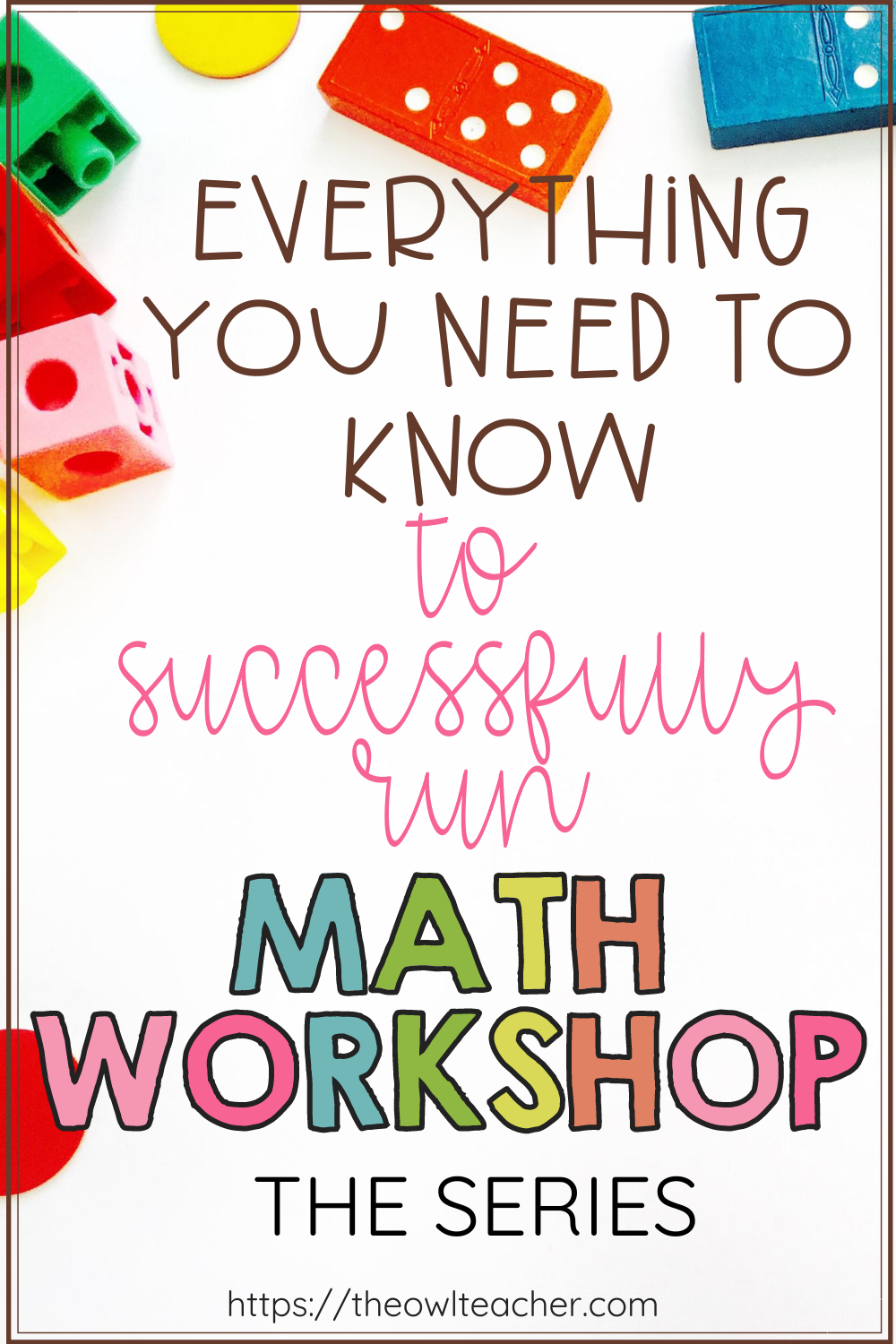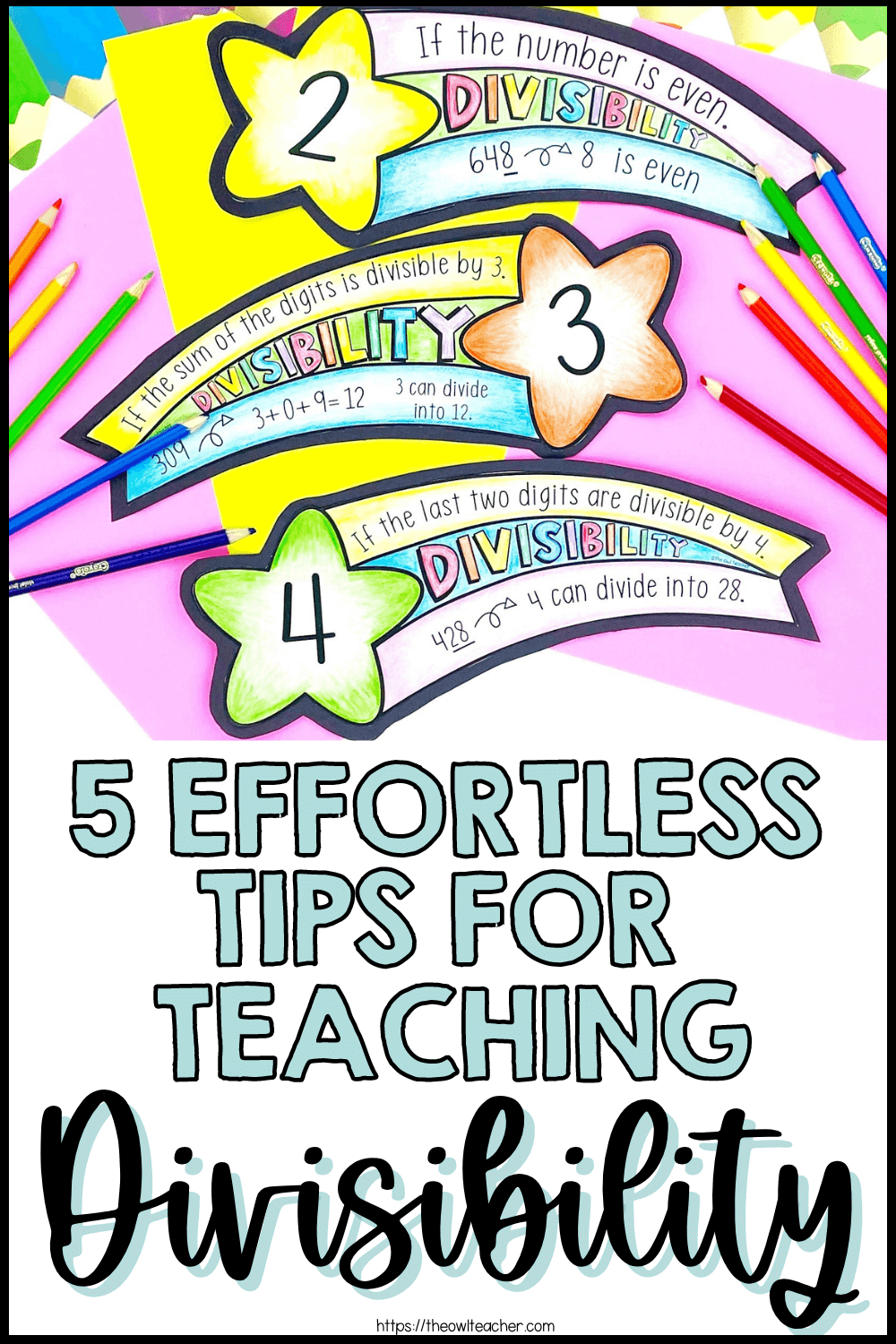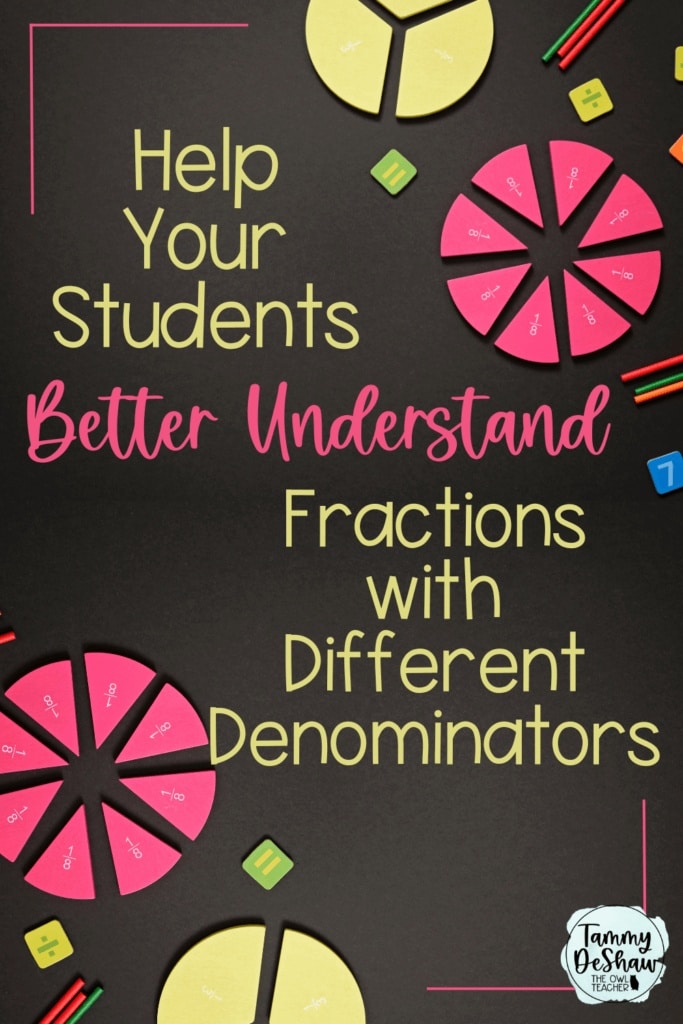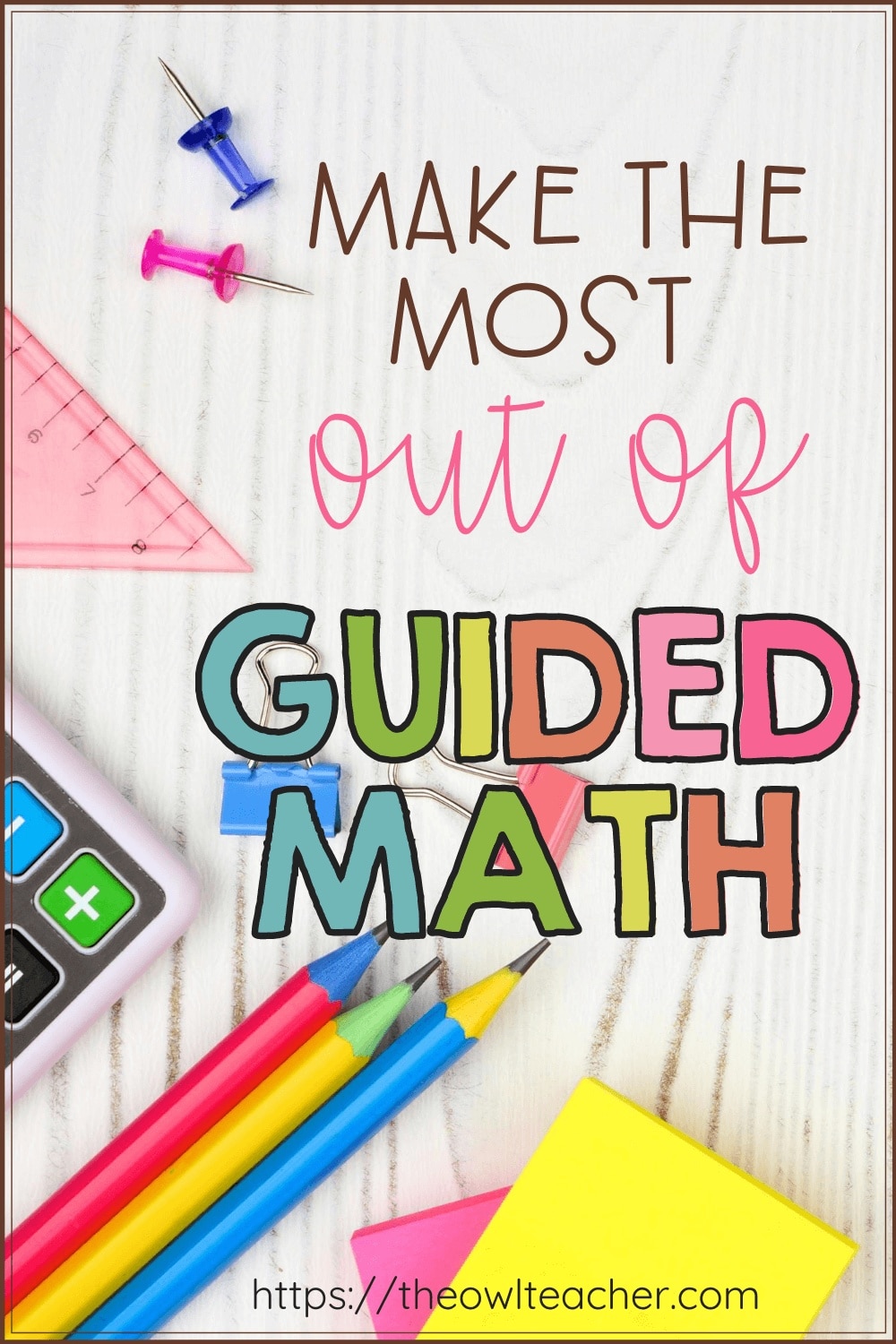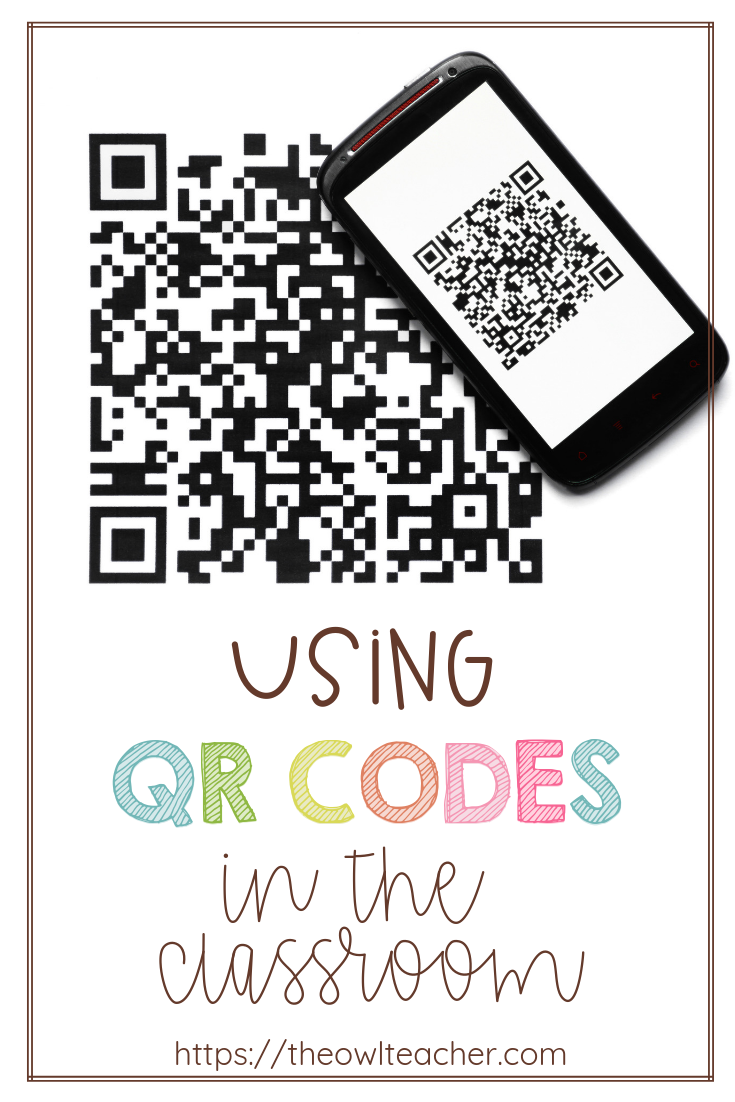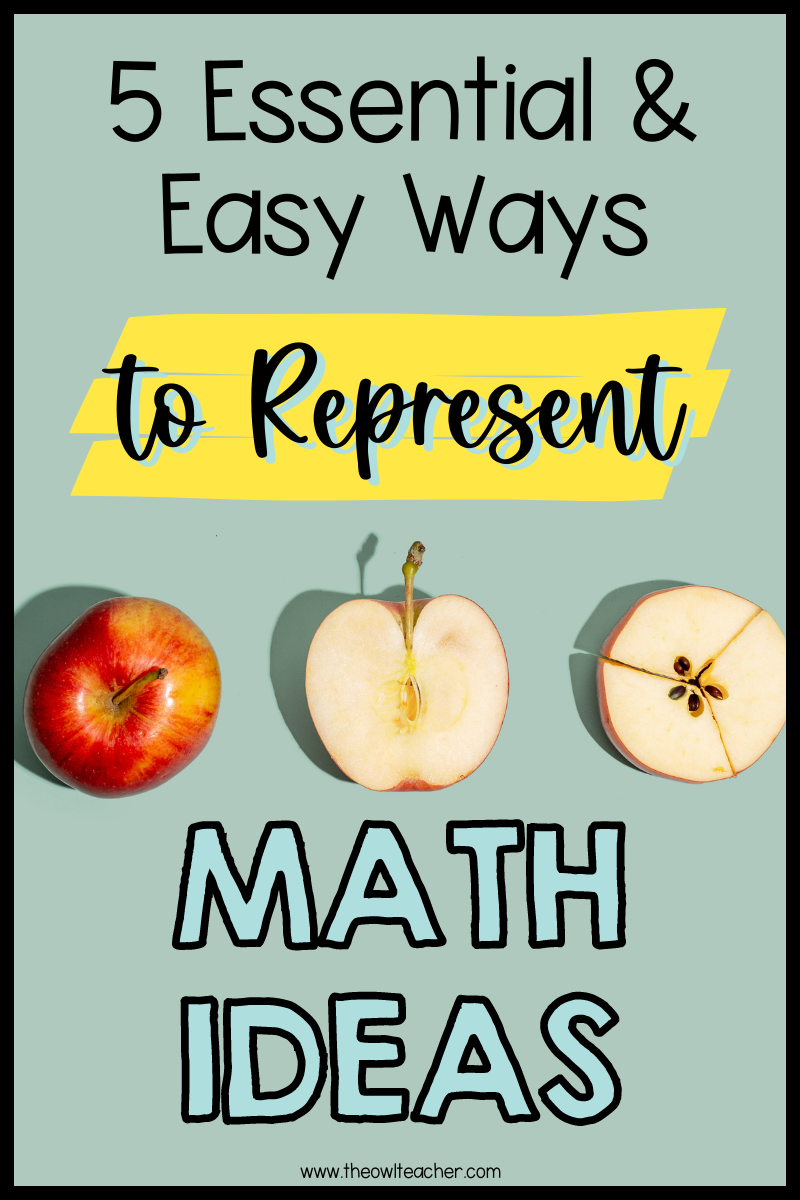
Day-after-day, you current new math concepts to college students. From methods to options to thoroughly new ideas, your kiddos can’t escape studying about math concepts on the every day… Not that they’d wish to, proper?
Joking apart, the reality of the matter is simply that: some college students would like to keep away from studying new math concepts as a lot as doable. Math is fast to be branded of their little minds as “too exhausting” or “too complicated.” Even probably the most math-happy college students can nonetheless expertise burnout. Sadly, our modern-day lecture rooms don’t all the time enable a lot time to decelerate, both–as educators, we’re pushed to get via the curriculum in a strict timetable with little alternative to dwell on a subject if college students are struggling.
In that case, it appears as if we’re higher off if we preemptively head off issues earlier than they start. However how, precisely, can we try this?
Differentiation. You already know, my all-time favourite phrase. I’ve solely written, oh… Over 100 weblog posts about it!
Differentiation in math is a given, however how will we differentiate materials after we first introduce a brand new math thought? In spite of everything, throughout the introduction part, we don’t even know which college students will battle and the way we can assist fairly but. Nicely, as I discussed earlier, we’re going to be preemptive about it! If we mix what we learn about completely different studying methods and the assorted methods to introduce new subjects, then we will give you a number of numerous strategies to symbolize math concepts.
Let’s get began!
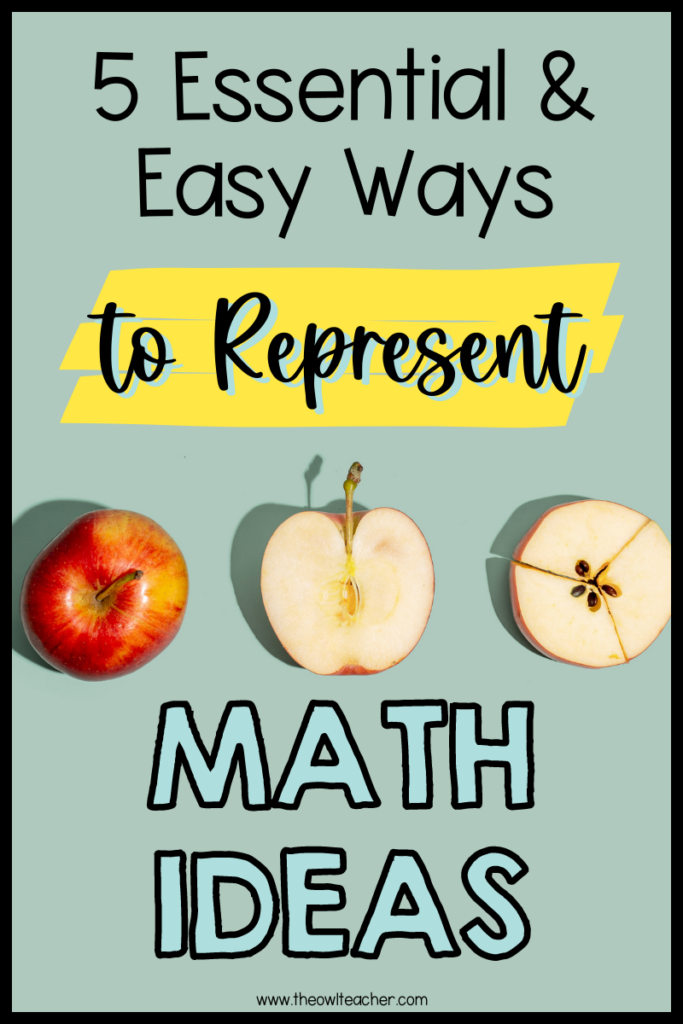
1. Bodily Illustration of Math Concepts
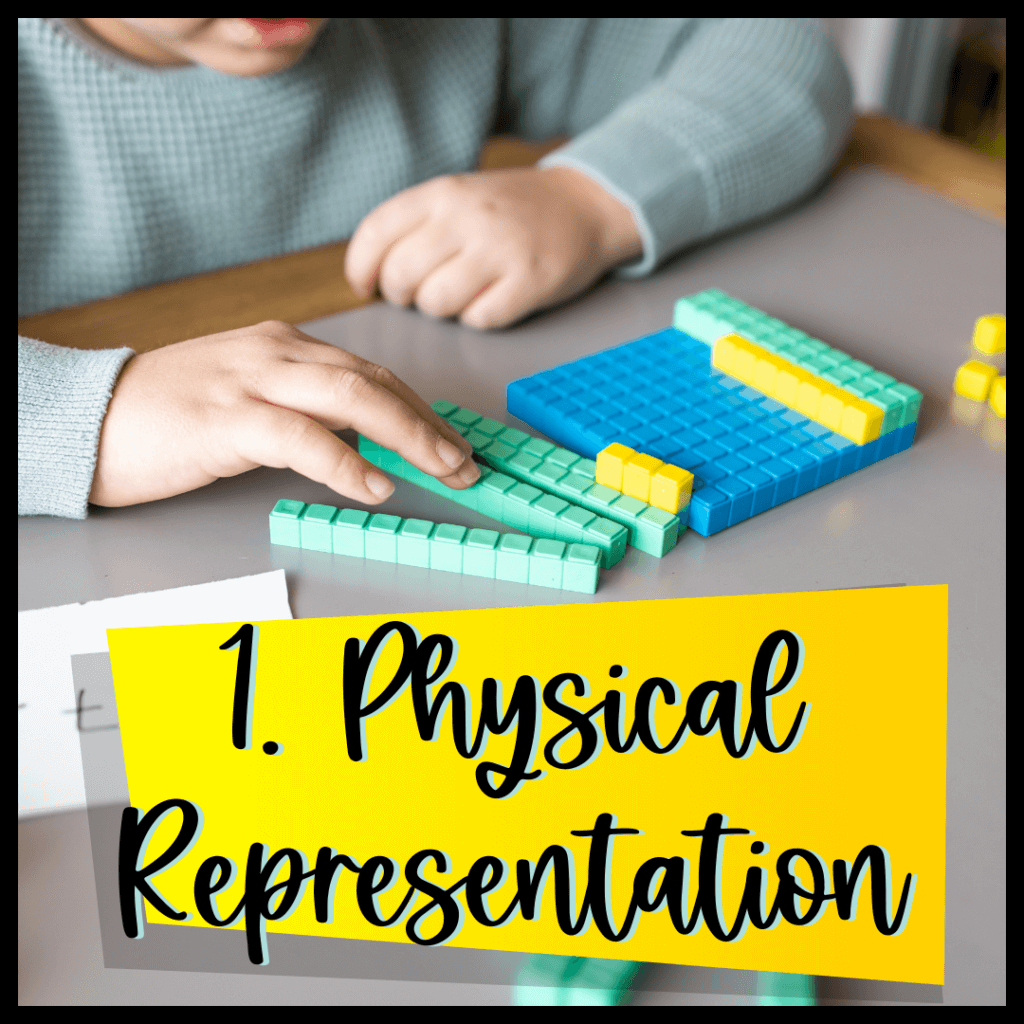
Initially, we’ll discuss my favourite methodology: bodily illustration of math concepts. Or, in different phrases, hands-on math! Anybody who is aware of me is aware of that I’m an enormous advocate for hands-on studying, and for good cause–it really works. It’s been proven time and time once more that hands-on studying promotes a deeper understanding of math concepts by permitting college students to actively interact with the ideas at hand, growing quantity sense and demanding considering expertise.
At its core, bodily illustration in math refers to utilizing tangible objects (manipulatives, base-ten blocks, and many others.) to symbolize and discover ideas. When college students use base-ten blocks to discover place worth, or use fraction strips for fraction operations, the mathematics concepts change into “actual” for them somewhat than an summary notion that’s tough to grasp.
On this means, bodily interplay helps cement these ideas past rote memorization. We would like college students to really perceive math concepts–why methods work and why they don’t, why an answer is sensible, and so forth somewhat than merely memorizing numbers for the examination.
Most educators could have fundamental assets of their lecture rooms already for bodily illustration, resembling base-ten blocks or sample blocks. Others, resembling fraction strips, might be created your self with somewhat elbow grease. Much more assets can be found on-line, resembling my Place Worth Sliders manipulative, and there are loads extra on the market! You could find or create a bodily illustration for practically all math concepts if artistic sufficient.
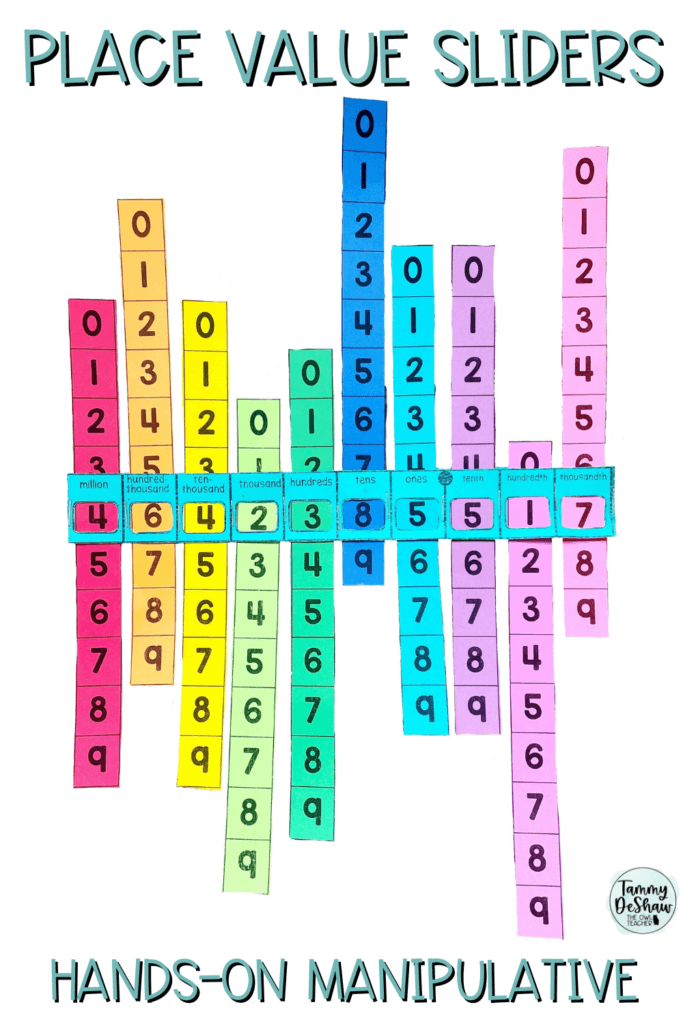
2. Visible Illustration of Math Concepts
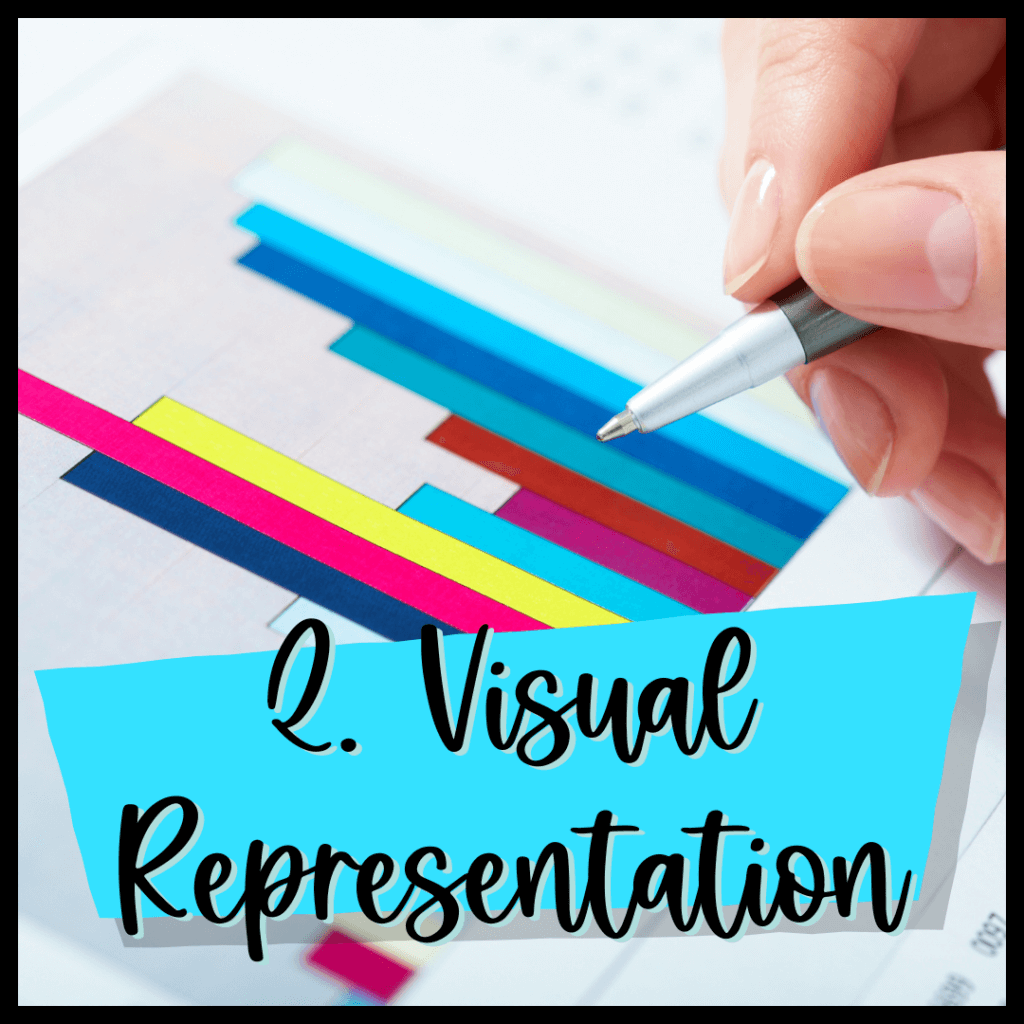
Whereas I like bodily illustration in math, visible illustration is actually a worthwhile backup for these math concepts which can be tough to convey bodily. Visible illustration refers back to the apply of utilizing photos, together with graphs, charts, and diagrams, to symbolize an idea.
Probably the most widespread examples of visible illustration within the classroom is thru quantity traces. For instance, when instructing multiplication methods, quantity traces are used as the muse for skip counting. One other widespread instance of visible illustration is throughout your measurement unit–in case your kiddos are something like mine, they’re all the time engaged and captivated by all of the colourful bar graphs!
As a baseline rule, when all else fails, I draw an image, and I encourage my college students to do the identical. Offering college students with one thing particular to image when considering over a math drawback is invaluable. Much like bodily representations, visible representations of math concepts assist make summary ideas extra concrete by offering college students with a deeper understanding and, in fact, growing quantity sense.
3. Symbolic Illustration of Math Concepts
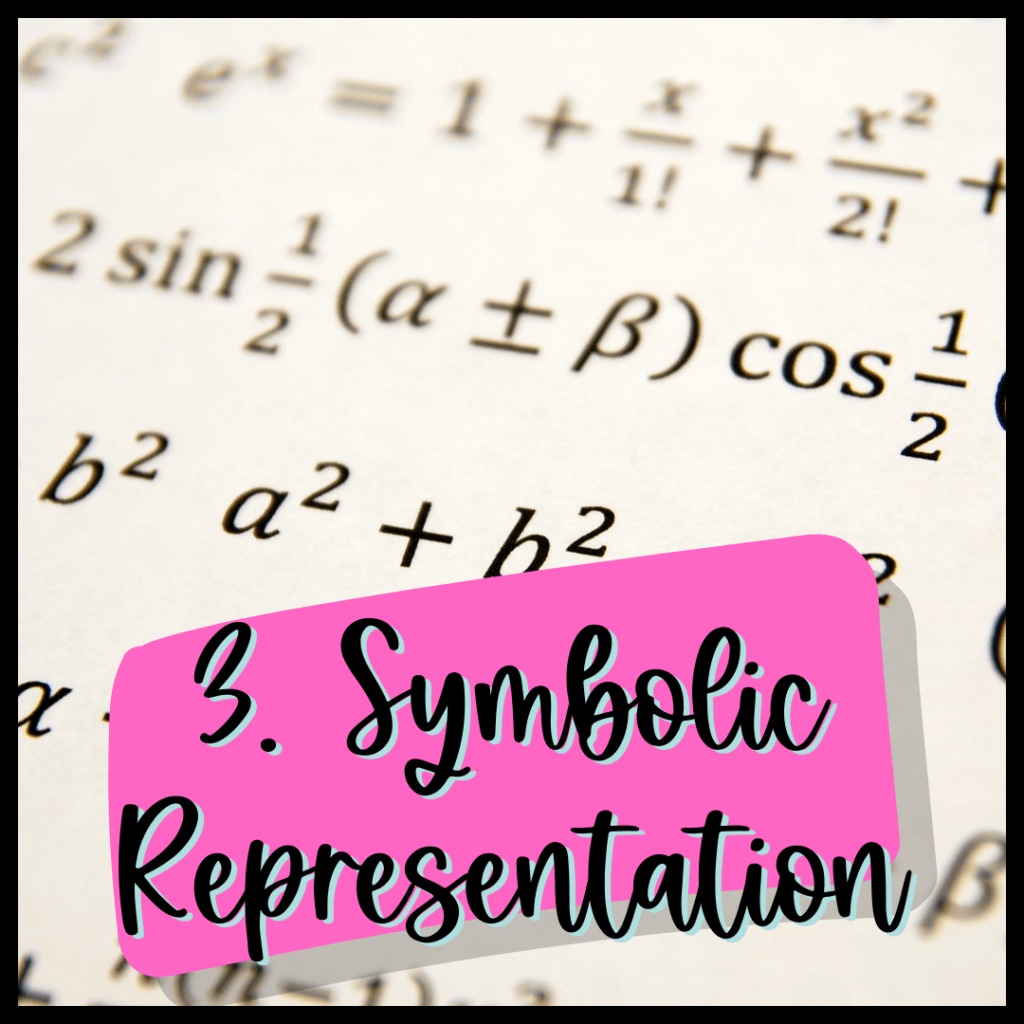
Symbolic illustration is a pure a part of the math-teaching course of. Everytime you draw symbols on the whiteboard or embrace them in your worksheets, you’re utilizing symbolic illustration for math concepts. Symbolic illustration is solely that–utilizing symbols, resembling numbers, plus indicators, parentheses, and so forth to symbolize an thought. Once we write 2 + 2, our minds robotically translate the symbols to imply “two added to 2.”
Nonetheless, our college students don’t have the many years of math information like we do. Once they first see these symbols, they appear like a overseas language–as a result of they’re! Solely via repeated expertise can they be taught this mathematical language of symbols.
Symbolic illustration is vastly vital to laying a robust basis for our elementary college students. As they change into fluent in mathematical symbols, college students develop algebraic considering–a much-needed device for achievement of their later instructional careers–and additional their understanding of mathematical language as a complete. On account of its significance, it’s important to assist younger college students perceive symbols in math. If you happen to’re enthusiastic about studying extra, try my weblog publish on the CRA (concrete, representational, and summary) methodology.
A typical technique for instructing symbolic illustration is to show math concepts concretely at first, utilizing visible and bodily representations as talked about beforehand. As soon as college students have a ample understanding of the idea, then you could introduce symbols.
Take note, nevertheless, that symbols are summary. Which means that college students might battle with comprehending them in addition to they do concrete symbols. It helps to proceed to remind college students of concrete representations whereas shifting via symbolic illustration. Don’t be afraid to maneuver again to bodily and visible representations to clear up any confusion!
4. Linguistic Illustration of Math Concepts
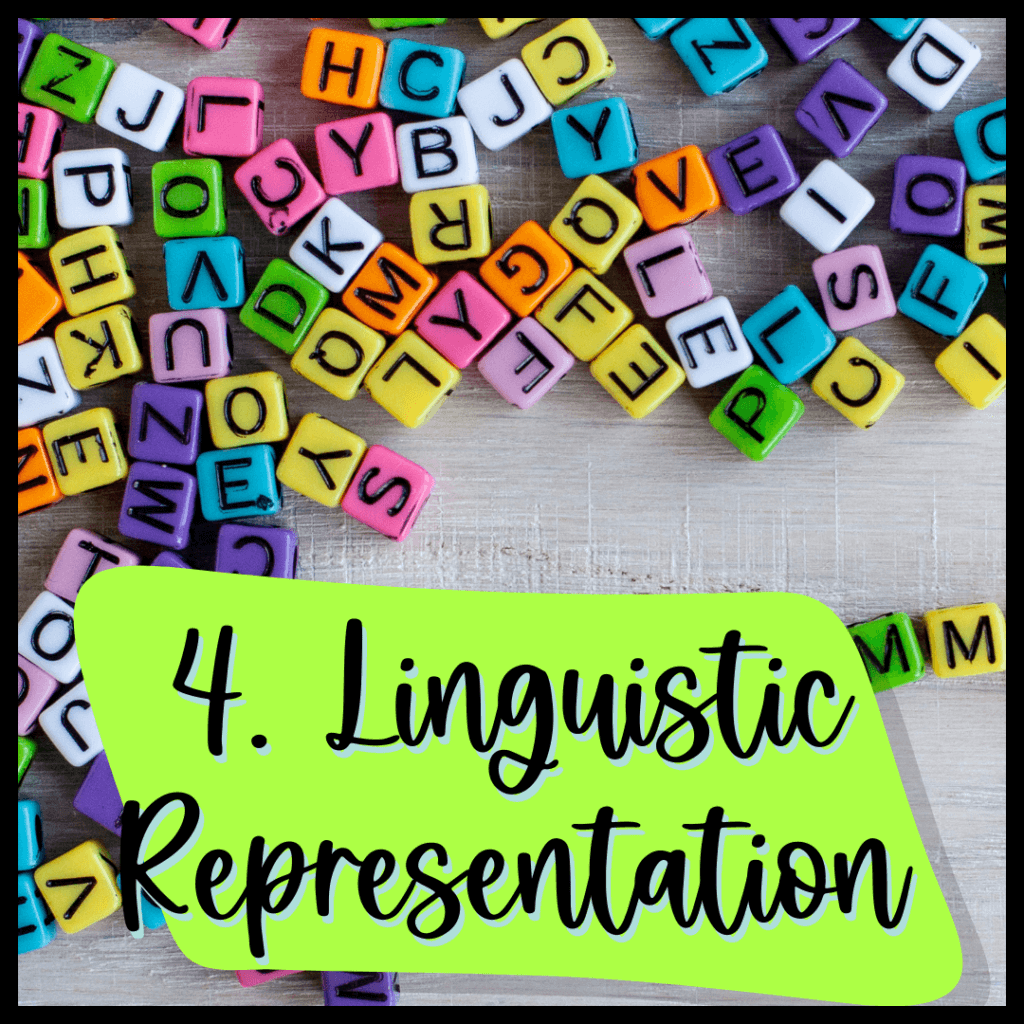
Equally to symbolic illustration, linguistic illustration (generally known as “verbal illustration”) is one other side of math concepts that we are inclined to implement naturally all through our math classes. Utilizing phrases resembling “higher than” to symbolize inequality and “sum” to symbolize the results of addition are all examples of linguistic illustration of math concepts, they usually go to indicate how widespread linguistic illustration might be in our lecture rooms–actually you’ve used these phrases a minimum of as soon as!
So how can we implement linguistic illustration deliberately and in a way that’s most helpful to our college students? I feel it bears repeating that, identical to with the symbols of symbolic illustration, the language of math is simply that–a wholly new language to your college students. Take heed to the truth that your college students are studying this new language!
In every little thing, repetition is vital. When you shouldn’t essentially begin throwing enormous phrases at your college students, you additionally shouldn’t shrink back from talking this mathematical language altogether. On the danger of sounding like a damaged document, you understand your classroom finest! Attempt to strike an excellent stability between difficult your college students however not overwhelming them.
The importance of linguistic illustration of math concepts stems from the truth that college students ought to be capable of verbally clarify not solely the mathematics drawback and answer, but in addition clearly talk their thought course of as they work via it. Because of this I’m an enormous supporter of think-pair-share, particularly in math! Nearly each single math workshop unit of mine makes use of think-pair-share in some unspecified time in the future, and for good cause. Verbally working via an issue with their friends helps to make clear college students’ considering processes and techniques. Common use of think-pair-share is a wonderful technique to benefit from linguistic illustration.
One other simple technique to implement linguistic illustration in your classroom is to make it a behavior to suppose out loud. When you’re writing an issue on the whiteboard, drawing an image, exhibiting a technique, or the rest, clarify what you’re doing and why you understand you’re doing it appropriately. Alternatively, you can also make errors on function, and ask college students to share with a associate why they know you’re incorrect. Encourage college students to make use of applicable “math language!”
5. Contextual Illustration of Math Concepts
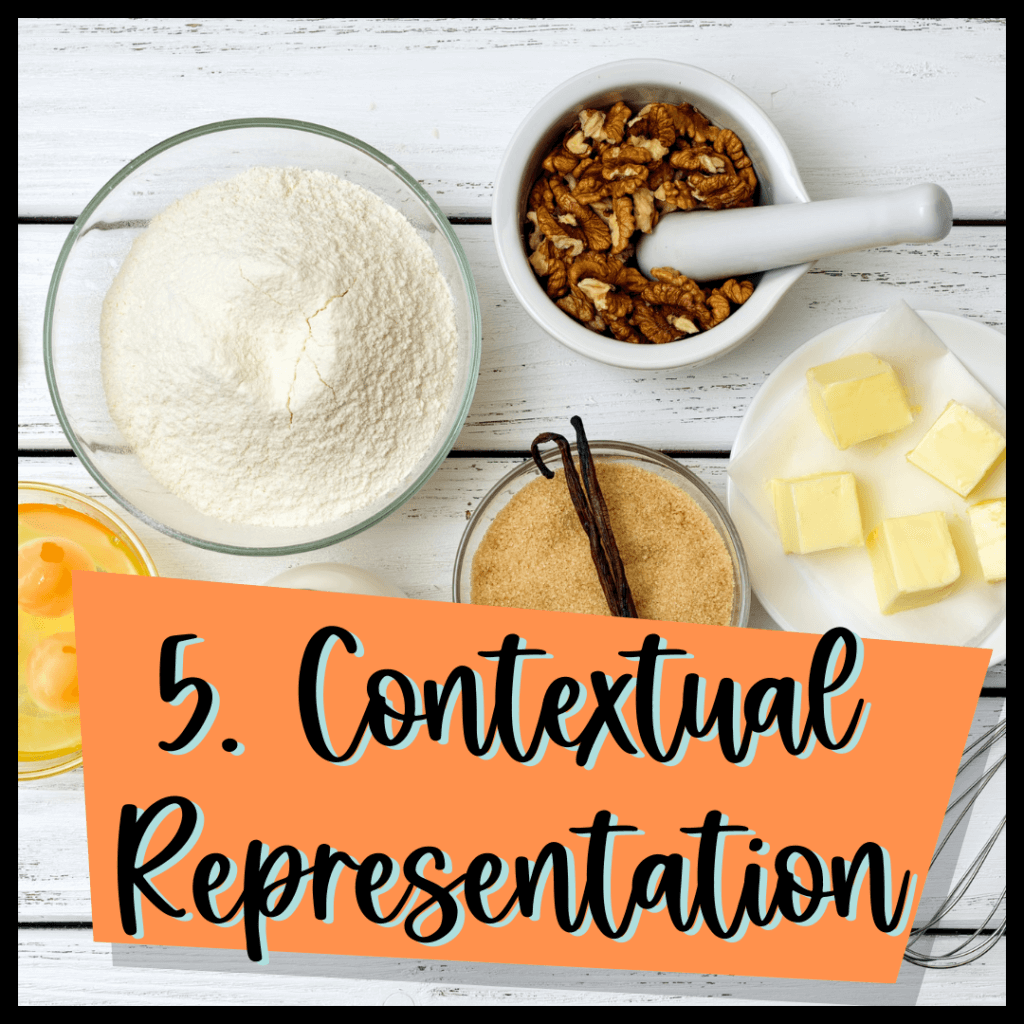
Contextual illustration of math concepts is the reply to the age-old query: “When are we ever going to make use of this in actual life?” By offering real-world context to your math concepts, you’ll be able to head off that query earlier than it even pops up! As well as, together with context helps college students perceive the significance of math concepts in addition to making them extra significant.
Some widespread examples of real-world context embrace connecting cash to decimals, or connecting recipes to fractions. Whereas there are many examples of context you’ll be able to present on your college students, it’s also helpful to have your classroom brainstorm their very own examples. Encourage them to make their very own contextual connections as a category–the extra examples, the higher, as college students will be capable of see how versatile and essential math is in practically each side of life.
One in every of my favourite methods to supply contextual illustration of math concepts is thru project-based studying. From fraction feasts to constructing a city utilizing space and perimeter, project-based studying supplies real-world context to math concepts by exhibiting college students simply how plentiful math is! Prefer it or not, math is all over the place… So you could as effectively concentrate at school, proper?
By utilizing a wide range of these representations and forging connections between them, we as lecturers can assist college students perceive math concepts in a number of methods and assist numerous studying types. Differentiation is all the time the secret: college students who battle with one sort of illustration might be able to perceive the idea extra readily when offered with one other sort of illustration.
Having a various studying atmosphere is crucial to enriching your college students’ schooling and setting a robust basis for his or her scholarly careers. Get college students concerned and engaged, they usually’ll be taught greater than ever earlier than.
That being stated… Get on the market and train some math!



